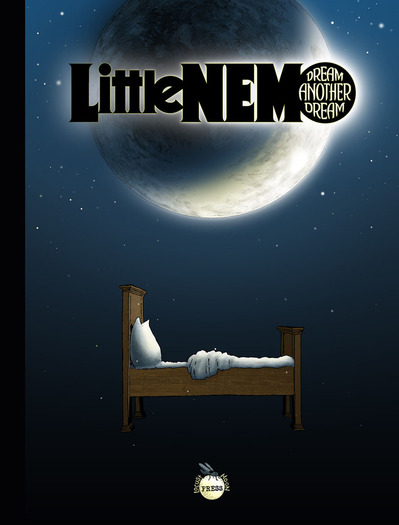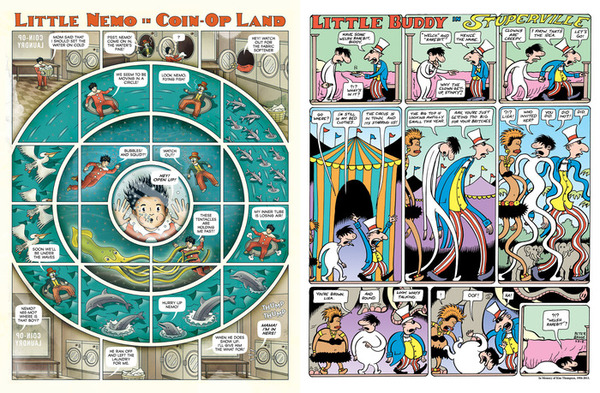
Writers/Artists: Various
Publisher: Locust Moon Press
Release Date: December 3, 2014
Nobody understood the compromise between dreams and reality more than cartoonist Winsor McCay. After launching the revered Little Nemo in Slumberland newspaper strip in 1905, McCay found himself bound to a contract under the Hearst Corporation that relegated his work to editorial illustrations. Much like his most famous creation — the titular boy who ventured nightly through his endless subconscious — the creator awoke to a sobering reality full of chastising adults and disappointment. Unlike his creation, McKay never returned to the dreamscape that Nemo perpetually inhabited.
Eighty eight years after its last strip was published, Little Nemo: Dream Another Dream resurrects McCay’s vision with the help of over 120 of the comic book industry’s most accomplished voices. The result is undeniably magical. Each artist contributes a single-sheet comic, though a few run for three or four pages. And what pages they are. This book defines epic in both scope and size, its dimensions inflated to a huge 16” x 21”. Every line and detail assumes a new degree of lucidity, allowing the creators to choreograph complex, winding panel sequences that lead the eye through a labyrinth of surreal exploits and design choices otherwise implausible.
If form is function, then Dream Another Dream is big in every way.
The roster of contributors stretches through the expanse of the medium, uniting big-two illustrators like John Cassaday and J.H. Williams III with indie pioneers like Dean Haspiel and Peter Bagge. As McCay channeled his own personal psychology into his work (R. Sikoryak’s contribution stars Freud narrating his manifesto — a fitting hallmark of the early 1900s), the artists project their own dreams, passions and fears. On the more whimsical side of this equation, many of the creators inject their own characters into the Nemo format. Bagge’s Buddy, Stephen Bissette’s Tyrant and Jill Thompson’s Scary Godmother all make cameos, most tumbling through numbered panels before arriving at the defining wake-up panel that ended each of Nemo’s original adventures.
A startling number of chapters conjure nightmares instead of dreams, ushering Nemo into his golden years and beyond. The inimitable Bill Sienkiewicz, who also contributes a stirring forward, illustrates a 4-page sequence in which Nemo’s mother stabs him in his bed before a hippopotamus EMT escorts him to the morgue. The last panel, a pair of Chuck Taylors hanging over a thumbnail moon, presents the most memorable image in the entire book. Sam Heimer, Jorge Coelho, Paul Allor and Jonathan Wayshak also introduce Nemo to a final resting place.
The most evocative entries border on the profound, exploring the universal mission of translating dreams into realities. John Cassaday subverts the Nemo formula, beginning his page with the young boy in bed and ending it with a moment of subliminal awe that challenges the definitions of awake and asleep. J.H. Williams fits a lifetime in one page, chronicling a Nemo whose waking life curiously parallels that of his creator. The last-panel reveal gloriously ties the theme to the original work with grace and emotion.
Not every entry plumbs into such existential depths, nor should it — dreams come in all shapes, sizes and moods. Ultimately, though, Dream Another Dream affirms Winsor McCay’s transcendental legacy over generations of talent, inspiring hope more than a century later and proving that dreams truly never die.



